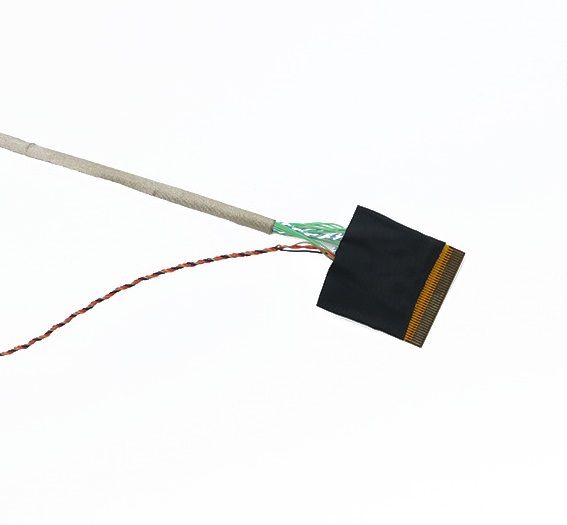Why the EDP cable can't recognize the display?
The inability of the EDP Cable (embedded DisplayPort line) to recognize the display can be caused by a variety of reasons. Here are some possible causes and solutions:

Possible cause
1. The interface is incorrectly inserted:
• If your computer or monitor has multiple display interfaces (such as HDMI, DP, VGA, etc.), you may have accidentally plugged the
EDP cable into the wrong interface. Especially when the computer has a separate graphics card and integrated graphics card, if the EDP cable is inserted into the interface of the integrated graphics card, and the display is set to output signals from the independent graphics card, it will cause unrecognition.
2. EDP cable is not well connected:
• The EDP cable may not be plugged in place, or there is a quality problem with the connection socket, resulting in poor contact. This affects the transmission of the signal, so that the monitor can not receive the video signal from the computer.
3. EDP Cable damage:
• The EDP cable may be damaged after prolonged use or improper use (such as frequent folding and pulling). The damaged line could not transmit the signal properly, causing the display to be unrecognized.
4. Display setup problem:
• Some displays require manual switching of signal sources. If the display is set to the wrong signal source (such as HDMI instead of DP), it will cause the display with the EDP cable to not be recognized.
5. Video card driver problem:
• The graphics card driver is outdated or damaged, which may cause the computer to not recognize and use the EDP interface properly.
6. Mainboard BIOS configuration problems:
• Some Settings in the mainboard BIOS may affect the normal operation of the EDP interface. For example, Compatibility Support Module (CSM) compatibility mode is not enabled. As a result, some new types of displays cannot be identified.
solution
1. Check the interface connection:
• Ensure that the EDP cable is properly plugged into the PC's separate graphics card DP port (if the PC has a separate graphics card).
• Check that the EDP cable is in place and the plug is secure.
2. Replace the EDP Cable:
• Try to replace a new EDP Cable to rule out the possibility of line damage.
3. Check the monitor Settings:
• Ensure that the display is set to receive signals from the DP interface. If the display has multiple signal source options, switch to DP manually.
4. Update the graphics card driver:
• Visit the graphics card manufacturer's official website to download and install the latest graphics card drivers.
5. Adjust the BIOS Settings on the mainboard:
• Restart the computer, and press the DEL key (or other specified key) repeatedly to enter the motherboard BIOS.
• Find the BOOT option or a similar setting to see if there is a CSM compatibility mode option and set it to Enabled (on).
• Save the Settings and exit the BIOS, then try to reconnect the EDP Cable.
6. Try other solutions:
• Try to turn both the console and the monitor off and then on again.
• Try plugging and unplugging the monitor's power cord, sometimes this can solve some strange connection problems.
If the above methods can not solve the problem, it is recommended to contact the computer or monitor manufacturer customer service, seeking professional technical support and repair services.
